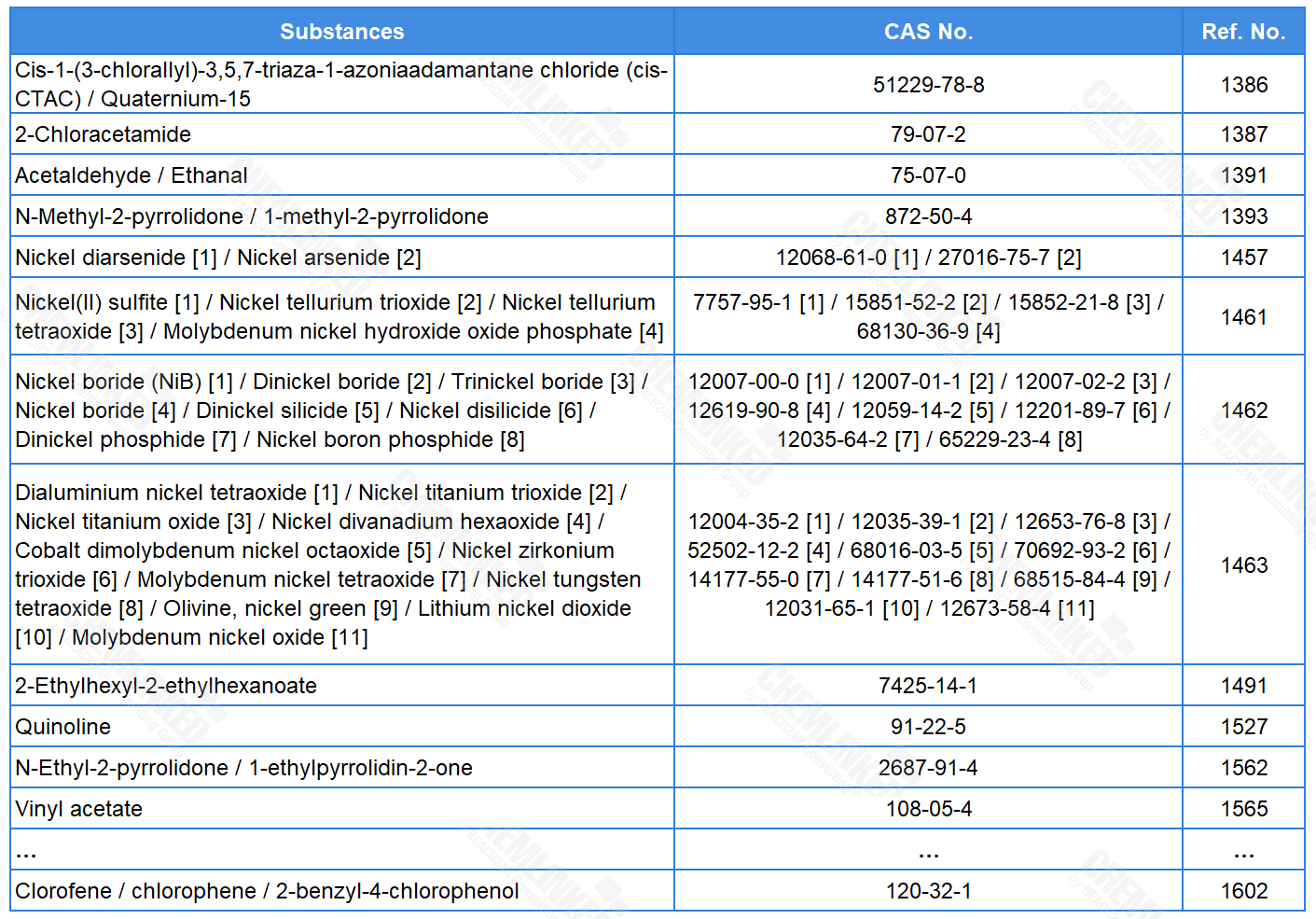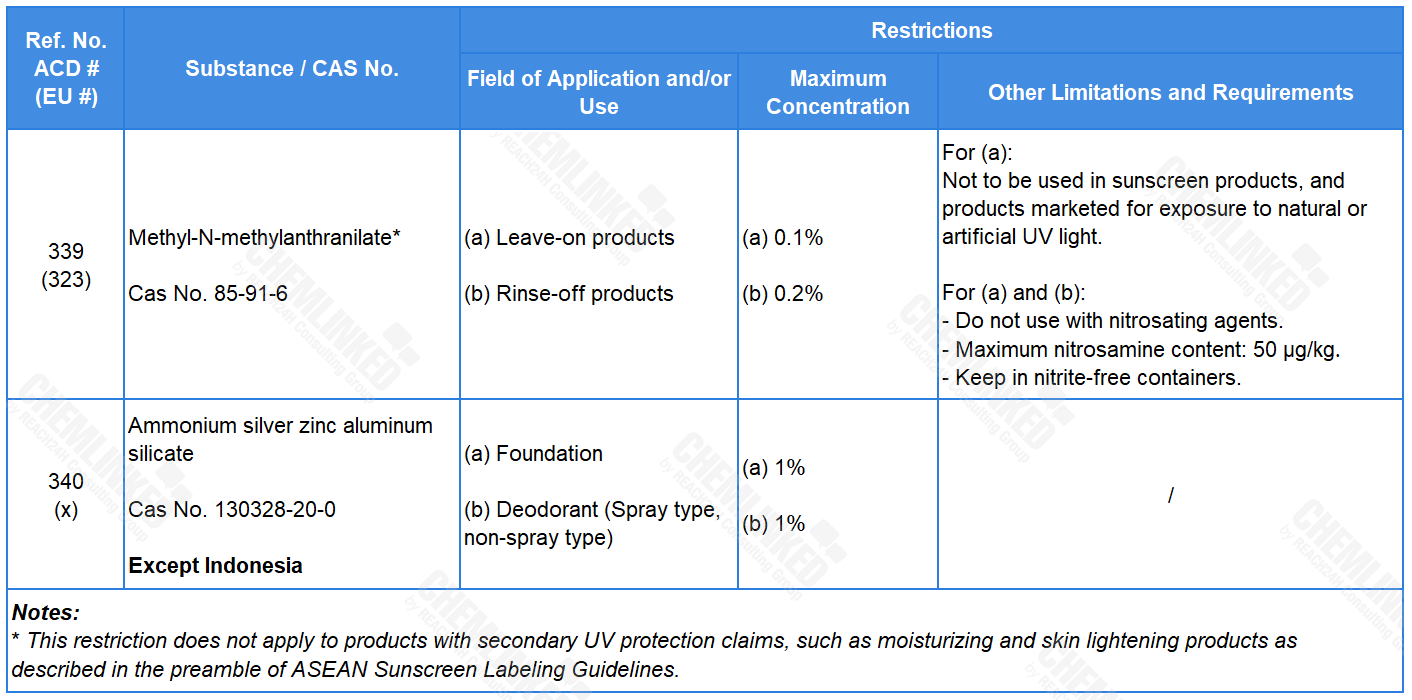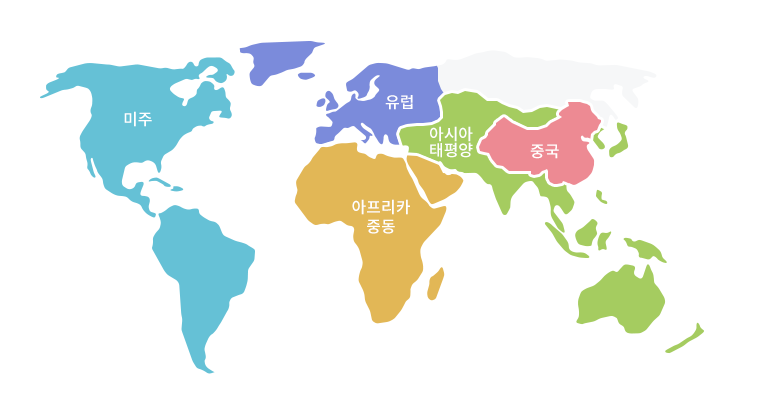법령정보
자료
[Chemlinked] ASEAN Introduces Amendments to the Ingredient Lists of ASEAN Cosmetic Directive
첨부파일
등록일 2023-07-17
조회수 6009
The 37th ASEAN Cosmetic Scientific Body (ACSB) meeting adopted new changes to cosmetic ingredient annexes:
1) List of prohibited ingredients: 19 entries added
2) List of restricted ingredients: 2 entries added
3) List of permitted preservatives: 1 entry revised
4) List of permitted UV filters: 2 entries revised
The 37th ASEAN Cosmetic Scientific Body (ACSB) meeting was held on May 8-9, 2023, during which new amendments to the ingredient annexes to ASEAN Cosmetic Directive (ACD) were approved. These amendments will officially take effect on May 8, 2025.
Detailed revisions to each annex are as follows (the text in red indicates changes to the previous lists):
1. Annex II List of Prohibited Ingredients: 19 entries added
On May 23, 2019, EU released the Commission Regulation 2019/831 to ban a group of CMR substances (those classified as carcinogenic, mutagenic or toxic for reproduction) in cosmetics, including 19 entries listed below. Referring to this amendment, the meeting agreed to newly include these entries into the prohibited ingredients list.

* Find the full list of 19 new entries here.
2. Annex III List of Restricted Ingredients: 2 entries added
Currently, Methyl-N-methylanthranilate and Ammonium silver zinc aluminum silicate are not regulated under the ACD. To guide their safe use in cosmetics, the meeting agreed to add them into the restricted ingredients list, based on the use restrictions established in EU Regulation (EC) No 1223/2009 (Cosmetics Regulation).

3. Annex VI List of Permitted Preservatives: 1 entry revised
By reference to the latest use requirements for Sodium N-(hydroxymethyl) glycinate in EU Cosmetics Regulation, the meeting amended the identification and use requirements for this preservative.

4. Annex VII List of Permitted UV Filters: 2 entries revised
In terms of permitted UV filters, the meeting supplemented the CAS number and use requirements for Octocrylene, as well as corrected the CAS number of 3,3-(1,4-Phenylene) bis (5,6-diphenyl- 1,2,4-triazine).

Further Reading
- ASEAN Amends Cosmetic Ingredient Annexes to ACD: 42 New Ingredients Included and 10 Ingredients Revised
- ASEAN Introduces Amendments to the Ingredient Lists of ACD: 3 New Ingredients Included and 13 Ingredients Revised
출처 : Chemlinked









